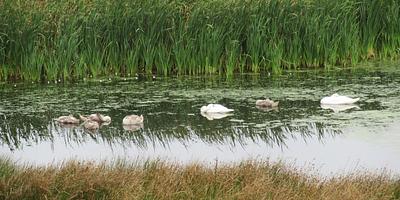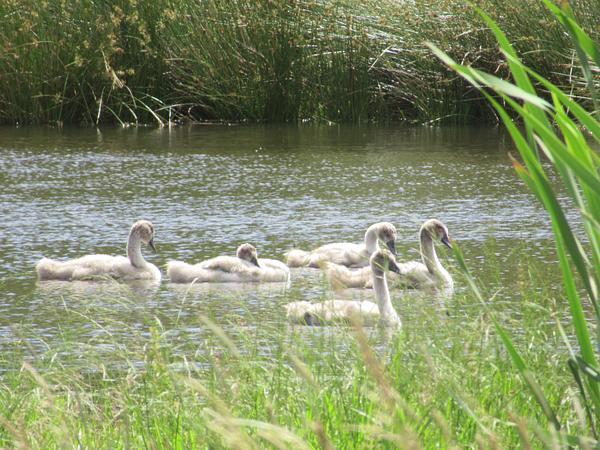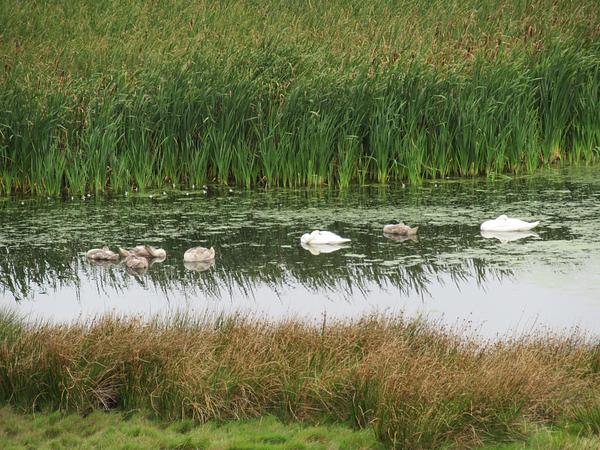
A Family Reunion
The trial project to control and raise water levels of the marsh on the north side of North Berwick Law has been running for two years and has succeeded beyond expectation in increasing the number and variety of breeding and wintering birds. This year a pair of Mute Swans nested successfully for the first time having tried and failed in 2019. However they have had an eventful breeding season.
The pair built a huge nest in the reeds and, to the delight of local people, five young were hatched in mid-May. All seemed to go well for the next seven weeks as the family group moved serenely around the marsh and the cygnets grew steadily, feeding on aquatic plants and animals. The male swan became even more territorial chasing away Greylag Geese that were trying to nest.
Then in early July the adults suddenly left, abandoning their still small young to join a moulting flock of swans at the mouth of the River Esk in Musselburgh. Like other wildfowl, swans moult their flight feathers each year and for about six weeks they cannot fly until new feathers have grown. For whatever reason they decided that Musselburgh was the place for them but it left the young cygnets without protection and support. It is very unusual for swans to do this – normally the parents look after their young until they can fly (at about 20 weeks) and then stay with them through to the winter.
What the young birds thought of this we shall never know but local swan watchers were dismayed. Experts warned that the cygnets might not survive or would have to be taken into care. Anxious counts were made each day to see how many were still alive – not easy as the birds can disappear into the reed beds for long periods and only rarely were all of them visible at the same time. Ten days later three of the cygnets got under the fence around the marsh and couldn’t get back again. Excluded from the marsh they would have had real problems but, happily, local volunteer Sylvia spotted them and popped them back over the fence. Fortunately that was their only attempt to escape into the outside world.

The five cygnets continued to defy gloomy predictions though for a long time they didn’t seem to get any bigger. However we gradually relaxed as they appeared to be managing well – by September they were nearly fully grown and even trying to take off in strong winds. The next question was what would happen when the parents returned which was likely to happen once they had finished their moult. Would the adults be pleased or otherwise to find their territory occupied by unruly teenagers and what would the young make of the re-imposition of parental control? We needn’t have worried. On 25th September, 12 weeks after their departure the adult pair flew in and were soon re-united with four of their five offspring. One cygnet stayed apart for a while but two days later the whole family was feeding and sleeping together. All was sweetness and light, at least for now.
We shall continue to follow the fortunes of this family through the autumn.

“I have seen old ships like swans asleep …” – James Elroy Flecker
